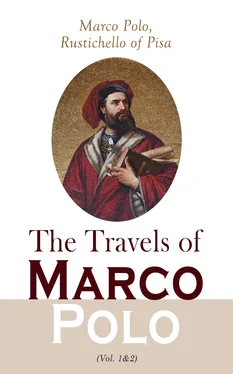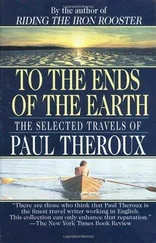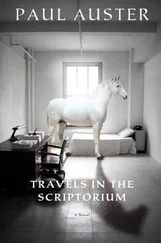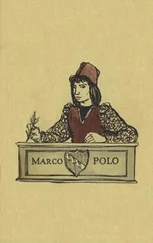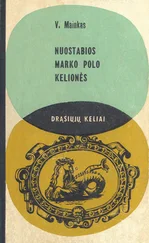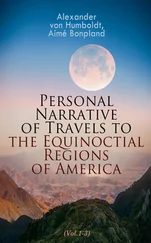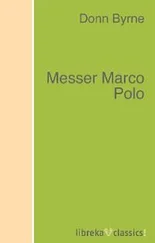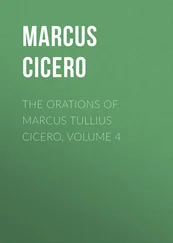Two or three years after his wife's death, Major Yule removed to Edinburgh, and established himself in Regent's Terrace, on the face of the Calton Hill.[12] This continued to be Yule's home until his father's death, shortly before he went to India. "Here he learned to love the wide scenes of sea and land spread out around that hill—a love he never lost, at home or far away. And long years after, with beautiful Sicilian hills before him and a lovely sea, he writes words of fond recollection of the bleak Fife hills, and the grey Firth of Forth."[13]
Yule now followed his elder brother, Robert, to the famous High School, and in the summer holidays the two made expeditions to the West Highlands, the Lakes of Cumberland, and elsewhere. Major Yule chose his boys to have every reasonable indulgence and advantage, and when the British Association, in 1834, held its first Edinburgh meeting, Henry received a member's ticket. So, too, when the passing of the Reform Bill was celebrated in the same year by a great banquet, at which Lord Grey and other prominent politicians were present, Henry was sent to the dinner, probably the youngest guest there.[14]
At this time the intention was that Henry should go to Cambridge (where his name was, indeed, entered), and after taking his degree study for the Bar. With this view he was, in 1833, sent to Waith, near Ripon, to be coached by the Rev. H. P. Hamilton, author of a well-known treatise, On Conic Sections , and afterwards Dean of Salisbury. At his tutor's hospitable rectory Yule met many notabilities of the day. One of them was Professor Sedgwick.
There was rumoured at this time the discovery of the first known (?) fossil monkey, but its tail was missing. "Depend upon it, Daniel O'Conell's got hold of it!" said 'Adam' briskly.[15] Yule was very happy with Mr. Hamilton and his kind wife, but on his tutor's removal to Cambridge other arrangements became necessary, and in 1835 he was transferred to the care of the Rev. James Challis, rector of Papworth St. Everard, a place which "had little to recommend it except a dulness which made reading almost a necessity."[16] Mr. Challis had at this time two other resident pupils, who both, in most diverse ways, attained distinction in the Church. These were John Mason Neale, the future eminent ecclesiologist and founder of the devoted Anglican Sisterhood of St. Margaret, and Harvey Goodwin, long afterwards the studious and large-minded Bishop of Carlisle. With the latter, Yule remained on terms of cordial friendship to the end of his life. Looking back through more than fifty years to these boyish days, Bishop Goodwin wrote that Yule then "showed much more liking for Greek plays and for German than for mathematics, though he had considerable geometrical ingenuity."[17] On one occasion, having solved a problem that puzzled Goodwin, Yule thus discriminated the attainments of the three pupils: "The difference between you and me is this: You like it and can't do it; I don't like it and can do it. Neale neither likes it nor can do it." Not bad criticism for a boy of fifteen.[18]
On Mr. Challis being appointed Plumerian Professor at Cambridge, in the spring of 1836, Yule had to leave him, owing to want of room at the Observatory, and he became for a time, a most dreary time, he said, a student at University College, London.
By this time Yule had made up his mind that not London and the Law, but India and the Army should be his choice, and accordingly in Feb. 1837 he joined the East India Company's Military College at Addiscombe. From Addiscombe he passed out, in December 1838, at the head of the cadets of his term (taking the prize sword[19]), and having been duly appointed to the Bengal Engineers, proceeded early in 1839 to the Headquarters of the Royal Engineers at Chatham, where, according to custom, he was enrolled as a "local and temporary Ensign." For such was then the invidious designation at Chatham of the young Engineer officers of the Indian army, who ranked as full lieutenants in their own Service, from the time of leaving Addiscombe.[20] Yule once audaciously tackled the formidable Pasley on this very grievance. The venerable Director, after a minute's pondering, replied: "Well, I don't remember what the reason was, but I have no doubt ( staccato ) it … was … a very … good reason."[21]
"When Yule appeared among us at Chatham in 1839," said his friend Collinson, "he at once took a prominent place in our little Society by his slightly advanced age [he was then 18–½], but more by his strong character. … His earlier education … gave him a better classical knowledge than most of us possessed; then he had the reserve and self-possession characteristic of his race; but though he took small part in the games and other recreations of our time, his knowledge, his native humour, and his good comradeship, and especially his strong sense of right and wrong, made him both admired and respected. … Yule was not a scientific engineer, though he had a good general knowledge of the different branches of his profession; his natural capacity lay rather in varied knowledge, combined with a strong understanding and an excellent memory, and also a peculiar power as a draughtsman, which proved of great value in after life. … Those were nearly the last days of the old régime , of the orthodox double sap and cylindrical pontoons, when Pasley's genius had been leading to new ideas, and when Lintorn Simmons' power, G. Leach's energy, W. Jervois' skill, and R. Tylden's talent were developing under the wise example of Henry Harness."[22]
In the Royal Engineer mess of those days (the present anteroom), the portrait of Henry Yule now faces that of his first chief, Sir Henry Harness. General Collinson said that the pictures appeared to eye each other as if the subjects were continuing one of those friendly disputes in which they so often engaged.[23]
It was in this room that Yule, Becher, Collinson, and other young R.E.'s, profiting by the temporary absence of the austere Colonel Pasley, acted some plays, including Pizarro . Yule bore the humble part of one of the Peruvian Mob in this performance, of which he has left a droll account.[24]
On the completion of his year at Chatham, Yule prepared to sail for India, but first went to take leave of his relative, General White. An accident prolonged his stay, and before he left he had proposed to and been refused by his cousin Annie. This occurrence, his first check, seems to have cast rather a gloom over his start for India. He went by the then newly-opened Overland Route, visiting Portugal, stopping at Gibraltar to see his cousin, Major (afterwards General) Patrick Yule, R.E.[25] He was under orders "to stop at Aden (then recently acquired), to report on the water supply, and to deliver a set of meteorological and magnetic instruments for starting an observatory there. The overland journey then really meant so; tramping across the desert to Suez with camels and Arabs, a proceeding not conducive to the preservation of delicate instruments; and on arriving at Aden he found that the intended observer was dead, the observatory not commenced, and the instruments all broken. There was thus nothing left for him but to go on at once" to Calcutta,[26] where he arrived at the end of 1840.
His first service lay in the then wild Khasia Hills, whither he was detached for the purpose of devising means for the transport of the local coal to the plains. In spite of the depressing character of the climate (Cherrapunjee boasts the highest rainfall on record), Yule thoroughly enjoyed himself, and always looked back with special pleasure on the time he spent here. He was unsuccessful in the object of his mission, the obstacles to cheap transport offered by the dense forests and mighty precipices proving insurmountable, but he gathered a wealth of interesting observations on the country and people, a very primitive Mongolian race, which he subsequently embodied in two excellent and most interesting papers (the first he ever published).[27]
Читать дальше
